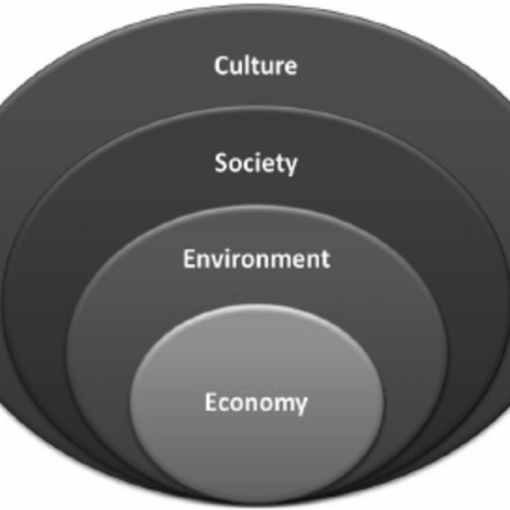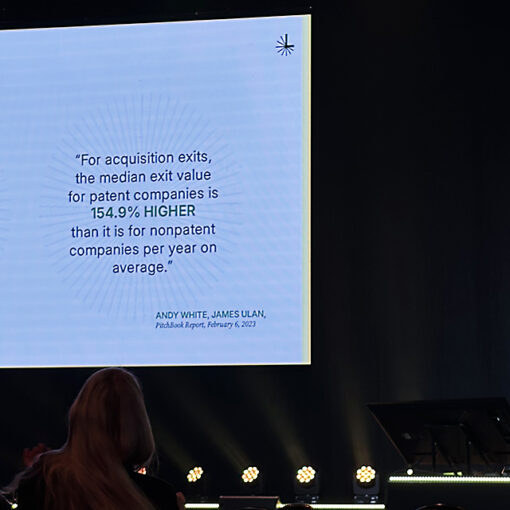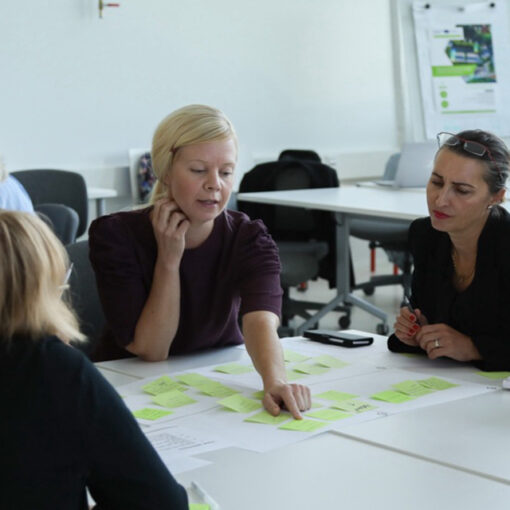Workspace design is guided by the goal of efficiency. The open-plan office promised continuous conversations, faster decision-making, and stronger teamwork, with no physical barriers blocking interaction between colleagues (BHIVE Workspace 2024). Yet, while open layouts may increase informal encounters, they often reduce genuine collaboration. While intended to boost interaction and innovation, shifts from rooms with doors to open-plan offices have resulted in a dramatic drop in face-to-face interaction, replaced by online messaging. (Bernstein and Turban 2018.)
Workers often report the downsides of the open-office: constant noise, stress, and difficulty concentrating on complex tasks, especially when sharing a space with people you don’t know that well (Ramantswana et al. 2024; Hui et al. 2025; Węziak‐Białowolska et al. 2018; Gharaei & Ghomeishi 2023). Smaller workrooms with one or two trusted colleagues offered something open plans rarely do: intimacy and safe idea-sharing, without the uncertainty of somebody you are not very close to, hearing you and being disturbed by what you say.

From bots to pals
Without these everyday confidants, many professionals have found new companions in artificial intelligence. Tools like ChatGPT have become the colleagues people turn to for brainstorming, feedback, or simply someone to “listen” without judgment. AI confidants provide a quiet confidant to turn to when the physical surroundings do not allow for effortless human interaction. While research indicates no tendency for replacing colleagues with AI in knowledge-intensive work (Sowa et al. 2021), there are also indications that the relationship between humans and advanced AI is changing fundamentally.
People have already reported forming close personal relationships with AI chatbots, describing them as “companions” or even “partners” who help them cope with loneliness, providing motivation and compassion (Batty 2025). For knowledge workers who once shared constant dialogue with a trusted office mate, AI fills the gap, always present, endlessly responsive, and increasingly anthropomorphised. As human connections and casual chat in the office wane, AI serves as a constant, non-human companion offering informal conversation and a sense of being heard. (Hamilton 2025)
The dark side
AI companionship has hidden costs. Large language models and AI servers rely on vast data centres, which demand enormous amounts of energy and water. In the European Union, data centres consumed between 45 and 65 TWh of electricity in 2022, equal to about 2% of the EU’s total power use (JRC 2023). By 2030, this could rise to 98.5 TWh—3.2% of all electricity consumed (European Commission 2023).
In key hubs such as Dublin, Frankfurt, and Amsterdam, the local picture is even starker: data centres already consume between 33% and 80% of all electricity (Ember 2025). Adding to the environmental impact, relying heavily on AI as a friend or a colleague has major psychological impacts. Increasing interaction with AI in and outside work can lead to increased need for social affiliation, loneliness and feelings of hollowness, potentially impairing well-being (Hamilton 2025; Tang et al. 2023; Batty 2025).
Systemic planning needed
What is at stake here is not just collaboration or productivity, but the very culture of work. The open office trend has been based on a genuinely noble cause, but has eventually eroded the intimate, trust-based exchanges that once shaped the workday. AI has stepped in as a surrogate counterpart, but it brings new social and ecological dilemmas. We may find ourselves building emotional ties to machines while draining finite ecological and mental resources to sustain those relationships.
This is just one unexpected link between technology and human behaviour, where careful, systemic planning could prevent unforeseen consequences. Focused on merging digital innovations with circular economy principles, CEI BOOST promotes technological transitions that serves sustainability. To create workplaces that are both sustainable and humane, we must blend digital tools with human connection, and innovation with ecological responsibility.
Author
Ari Hautaniemi works as a communication specialist in the Interreg Europe-funded CEI Boost project (link to the CEI Boost project website) at the LAB University of Applied Sciences Institute of Design and Fine Arts.
References
Batty, D. 2025. ‘She helps cheer me up’: the people forming relationships with AI chatbots. The Guardian, 15 Apr 2025. Cited 27 Aug 2025. Available at https://www.theguardian.com/technology/2025/apr/15/she-helps-cheer-me-up-the-people-forming-relationships-with-ai-chatbots
Bernstein, E. & Turban, S. 2018. The impact of the ‘open’ workspace on human collaboration. Philosophical Transactions of the Royal Society B: Biological Sciences, 373(1753). Cited 27 Aug 2025. Available at https://doi.org/10.1098/rstb.2017.0239
BHIVE Workspace. 2024. The Open Office Concept: Key Benefits for Modern Workspaces. Cited 27 Aug 2025. Available at https://bhiveworkspace.com/the-open-office-concept-key-benefits-for-modern-workspaces/
Ember. 2025. Grids for Data Centres in Europe: Planning for the AI and Cloud Era. Report. Cited 27 Aug 2025. Available at https://ember-energy.org/app/uploads/2025/06/Report-Grids-for-data-centres-in-Europe-PDF.pdf
European Commission. 2023. Commission takes first step towards establishing EU-wide scheme rating sustainability of data centres. Press release, 12 Dec 2023. Cited 27 Aug 2025. Available at https://energy.ec.europa.eu/news/commission-takes-first-step-towards-establishing-eu-wide-scheme-rating-sustainability-data-centres-2023-12-12_en
Gharaei, B. & Ghomeishi, M. 2023. Evaluating office design parameters’ effects on the interactive behavior of employees in open-plan and activity-based offices – A multi-group analysis approach. Current Psychology. Cited 27 Aug 2025. Available at https://doi.org/10.1007/s12144-023-04949-8
Hamilton, S. 2025. Why AI Work Friends Are Becoming Emotional Support For Employees. Forbes. Cited 27 Aug 2025. Available at https://www.forbes.com/sites/dianehamilton/2025/06/10/why-ai-work-friends-are-becoming-emotional-support-for-employees/
Hui, K., Ulang, N. & Yun, V. 2025. Integrating open office design strategies for improved user satisfaction in industrial work environments. PaperASIA, 41(2b), 353. Cited 27 Aug 2025. Available at https://doi.org/10.59953/paperasia.v41i2b.353
JRC. 2023. European Data Centres and Data Transmission Networks: Energy Efficiency and Environmental Impact. Joint Research Centre Technical Report. Publications Office of the European Union, Luxembourg. Cited 27 Aug 2025. Available at https://publications.jrc.ec.europa.eu/repository/handle/JRC135926
Ramantswana, T., Mmamabolo, L. & Appel-Meulenbroek, R. 2024. Open-plan office employees’ perceived mental and social well-being. Journal of Corporate Real Estate. Cited 27 Aug 2025. Available at https://doi.org/10.1108/jcre-10-2023-0042
Sowa, K., Przegalinska, A., & Ciechanowski, L. 2021. Cobots in knowledge work. Journal of Business Research, 125, 135-142. https://doi.org/10.1016/j.jbusres.2020.11.038.
Tang, P., Koopman, J., Mai, K., De Cremer, D., Zhang, J., Reynders, P., Ng, C., & Chen, I., 2023. No person is an island: Unpacking the work and after-work consequences of interacting with artificial intelligence. The Journal of applied psychology. https://doi.org/10.1037/apl0001103.
Tumisu. 2019. artificial-intelligence-technology-3964530. Cited 27 Aug 2025. Available https://pixabay.com/photos/artificial-intelligence-technology-3964530/
Węziak‐Białowolska, D., Dong, Z. & McNeely, E. 2018. Turning the mirror on the architects: A study of the open-plan office and work behaviors at an architectural company. Frontiers in Psychology, 9, 2178. Cited 27 Aug 2025. Available at https://doi.org/10.3389/fpsyg.2018.02178
Links
Link 1. Interreg Europe. 2024. CEI Boost website. Cited 29 Apr 2024. Available at https://www.interregeurope.eu/cei-boost




